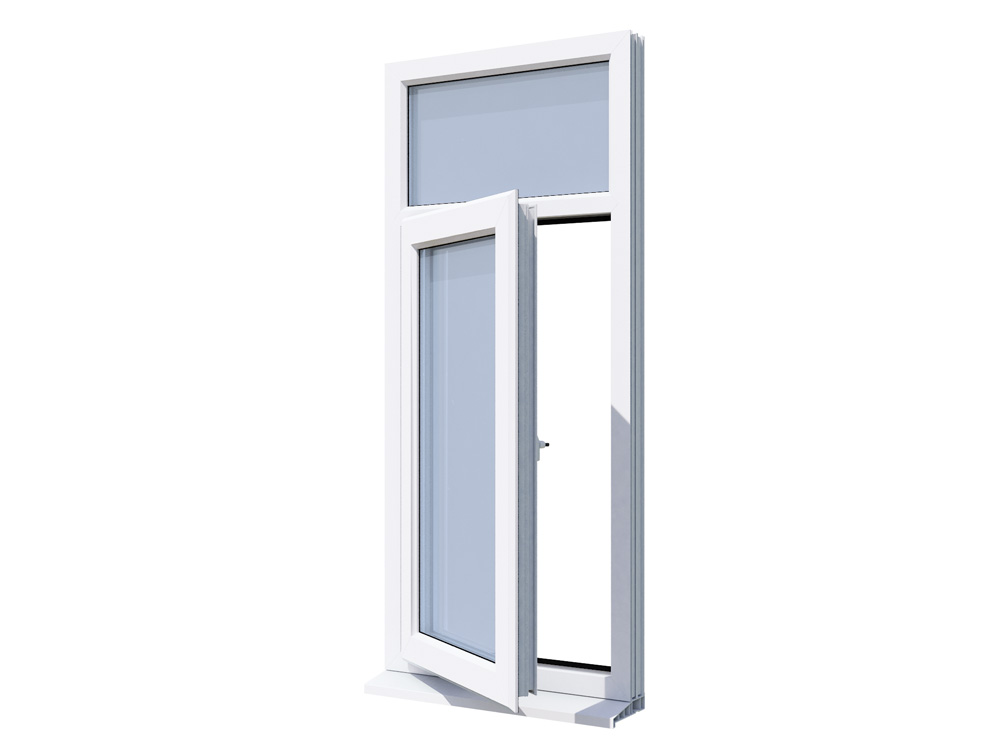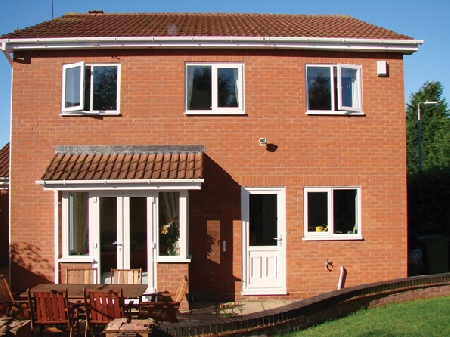
If you’ve ever spotted a window that opens out like a door, hinged at the side and swinging open with a handle, then you’ve seen a casement window in action. While the hinge doesn’t need to be at the side, this style is incredibly prevalent and been around for a long time. Whether you’re building new or updating an older home, casement windows are a solid choice that will fit right in, both in terms of looks and practicality.
How Does a Casement window Work?

The design is quite straightforward: a casement window is attached to the frame with hinges on the side (left or right), and it opens outwards with a handle you can use to open and shut it. Because they swing fully open, they give you a wide opening which is great for ventilation. While the standard is to open from the side, you can also have hinges on the top where the window opens from the bottom, technically called an awning window. Our wide range of uPVC windows can be customised with various openings and arrangements.
Why are Casement windows popular?
One of the biggest draws is airflow. Because casement windows open outwards, they can catch side breezes and funnel fresh air into your space. With the weather getting hotter, having a natural way to let air flow through is key. They’re also great for energy efficiency. When closed, the sash presses tightly against the frame, making them super draught-resistant. That helps keep your home warm in winter and cool in summer, which is always a win for comfort and the energy bill.
Security-wise, they’re pretty reliable as a rule but our products in particular are really difficult to break into. Our uPVC casement windows come with multi-point locking as standard, meaning they lock at several points around the frame, not just in one spot. We also have anti-jemmy blocks in the internal uPVC frame and internal beading to make them even harder to break into. Once they’re shut and locked, they’re going to be harder to break into than standard windows.
What buildings do Casement Windows suit?

Honestly? Pretty much anywhere. Casement windows are one of those styles that play nicely with most types of architecture. In older homes, like cottages or Victorian terraces, they blend in without feeling out of place. In modern homes, they give you that clean, simple look without overcomplicating the design. They’re also really popular in places where airflow matters, like kitchens, bathrooms, or upstairs bedrooms.
And if you’re wondering how uPVC windows will look on older properties, the good news is that we have a great range of coloured uPVC windows that will help! Our natural wood colouring designs give the aesthetics of old wooden frames with the resilience of uPVC. You can read about what uPVC window colours there are over at our help centre.
How many types of Casement Windows are there?
Casement windows come in loads of variations, so you can tweak them to suit your home. From a huge range of grid patterns and glazing options to configuration of hinges and optional woodgrain effects, there’s plenty of room to personalise without going overboard with more than 100 styles on offer here at Windows and Doors!
Whether you’re looking for a 6 panel show piece with a warm finish like light oak, or just a single pane window in classic white, there’s a combo of options here that will suit your taste and your budget.
Casement windows may be standard in most homes, but their versatility and range of styles proves why they’re so popular. They tick the boxes for airflow, energy efficiency and everyday ease of use, all while being low-maintenance and good-looking. Not to mention, they’re easy to install and can help keep the temperature down too!
Whether you’re doing a full renovation or just replacing a few tired frames, they’re a great option that blends form and function without making a big fuss.



















